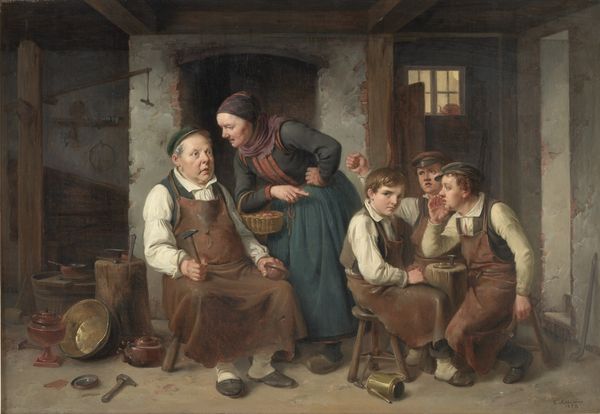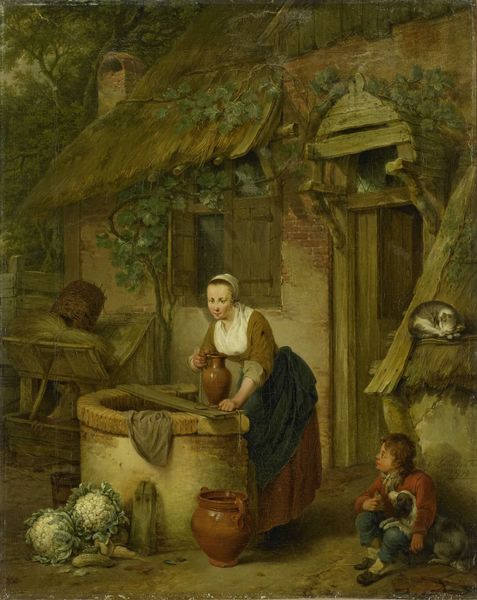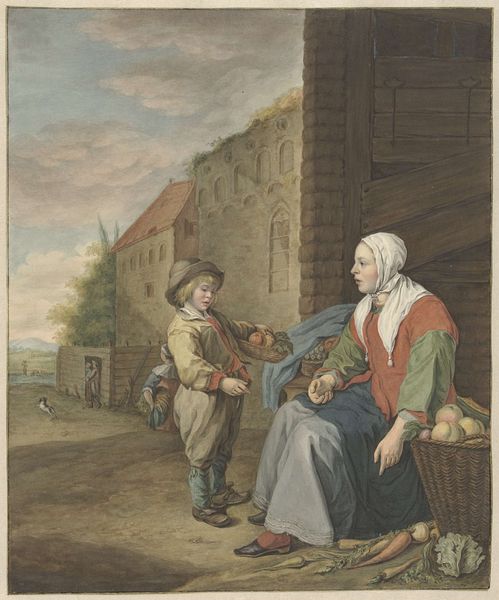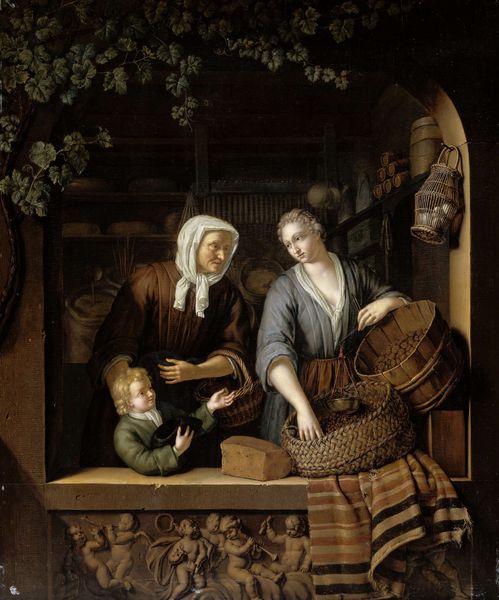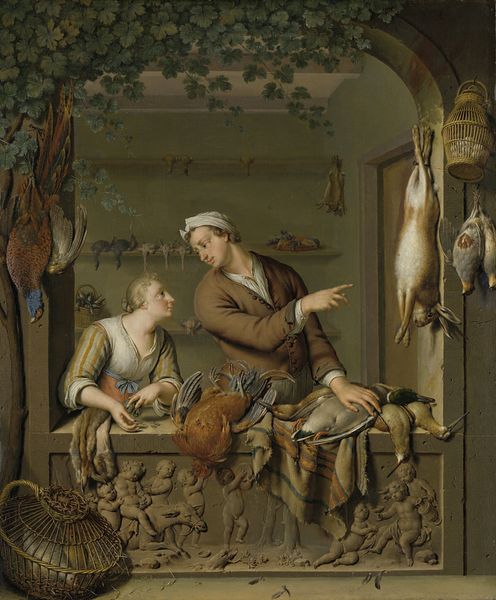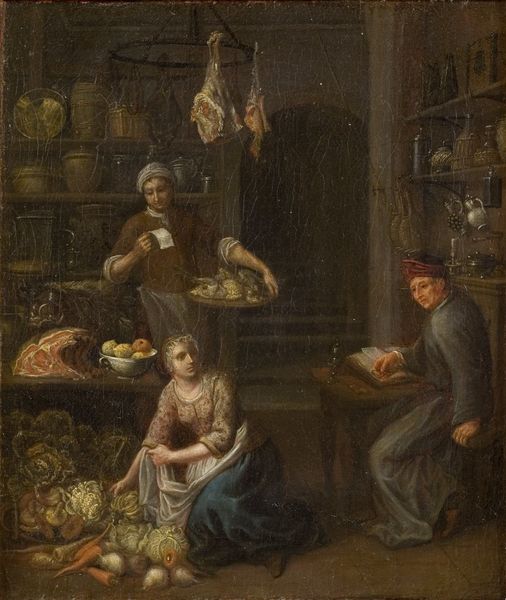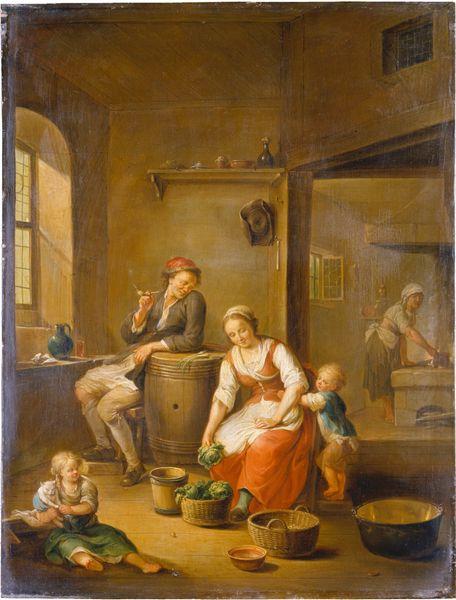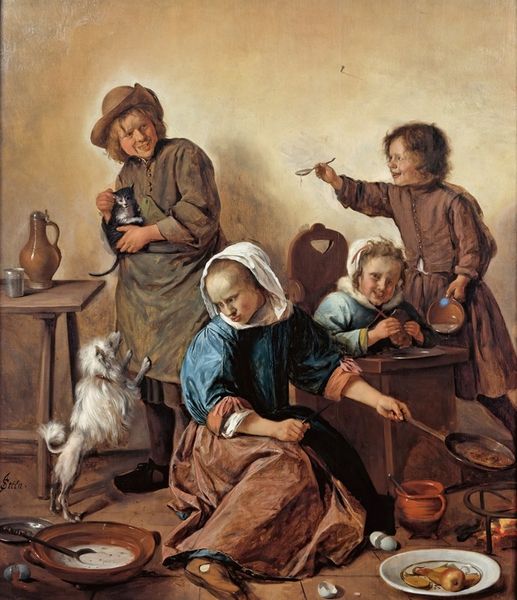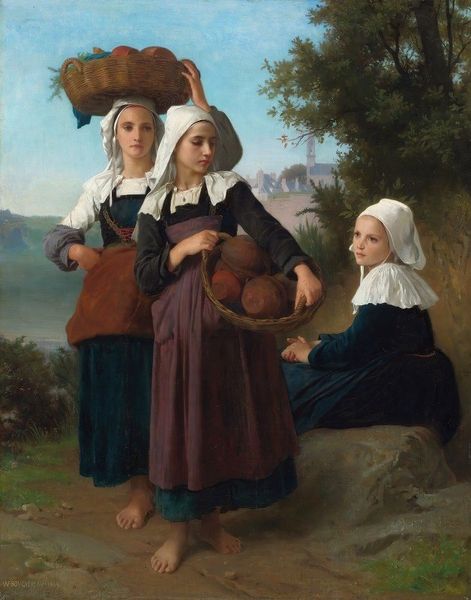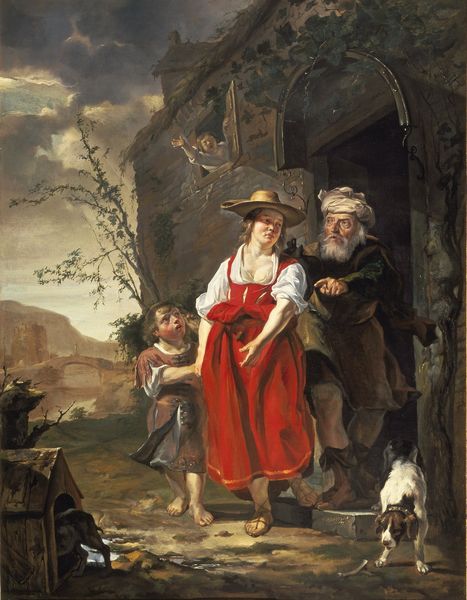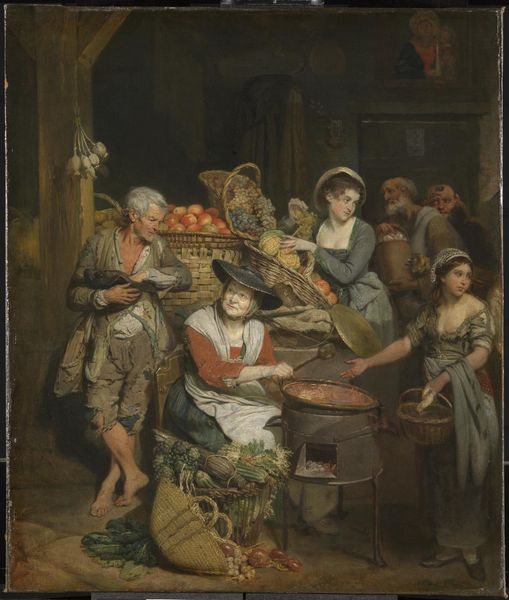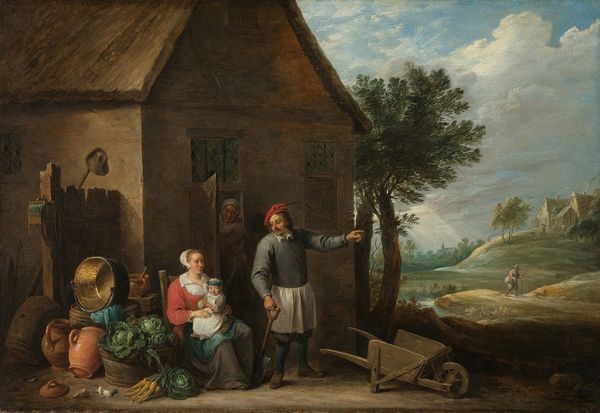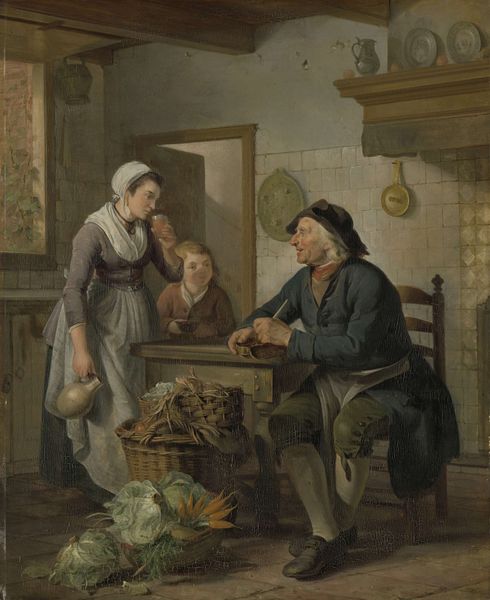
painting, oil-paint
#
narrative-art
#
baroque
#
painting
#
oil-paint
#
landscape
#
figuration
#
group-portraits
#
genre-painting
#
history-painting
#
realism
Dimensions: support height 59 cm, support width 44 cm, outer size depth 8 cm
Copyright: Rijks Museum: Open Domain
Curator: Look at this oil painting by Peeter Snijers, dating from sometime after 1730, entitled "Allegory of the Month of March." Editor: My initial impression is one of… muted prosperity. The colors are soft, the scene calm, but there’s definitely a feeling of abundance hinted at through the details. Curator: Snijers was working in Antwerp at a time when the city, though no longer the economic powerhouse it once was, still cultivated an image of civic pride and well-being through its art. You see this play out often through market scenes with rich displays of goods and the people are healthy and properly dressed. This artwork certainly adheres to that. Editor: Absolutely. And look at the fish; not just their presence, but their silvery sheen. Fish often signify fertility and abundance, a promising sign in early spring as March is of course all about the awakening of life after winter. It speaks to both the literal, tangible abundance, and the symbolic, hopeful potential of the season. There is also a lamb: innocent, sacrificial, and again symbolic of March. Curator: Precisely. The depiction of markets like these isn't purely documentary. These scenes are idealized visions which reinforced the ruling classes’ sense of themselves as benevolent providers. Take the details of their clothing: everyone is very decently dressed but simply and realistically according to their positions. Editor: But the setting is so specific; is that a real location, do you think? Or is it also somewhat symbolic, referring back to a generalised idea of 'Flemish' identity or even a moral identity? It seems quite contained within these walls and fences and little buildings… not expansive, but self-contained. Curator: Well, such a level of detailing and care certainly points to the importance of the work for a wealthy clientele looking to see its virtues reflected. This also allows an insight into the societal strata of that time. One gets the impression that while realistic, these scenes had their reality painted as a flattering picture. The artifice should not go unnoticed. Editor: The artist shows mastery through seemingly small elements that are deeply symbolic, making the artwork relevant in our own present moment. The figures and the items that surround them weave stories about a population, its values, and its longings. Curator: And even if those values were partly a fiction, a performance for the elite, the very act of performing them tells us something vital about the social fabric of the time. Editor: I think understanding this tension between the real and the idealized adds to our present perspective and offers something for everyone.
Comments
No comments
Be the first to comment and join the conversation on the ultimate creative platform.
